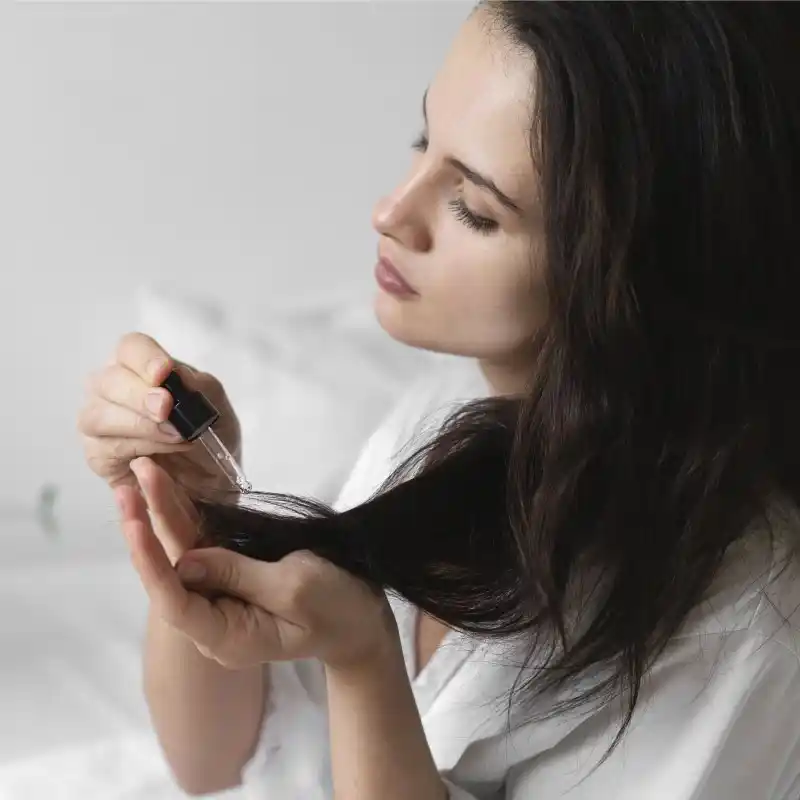How Many Hairs Lost Per Day is Normal?
Hair shedding is a normal part of the hair growth cycle. However, seeing hair on your pillow, in
the shower, or on your brush can be worrying. So, how much hair loss is normal, and when should
you be concerned? Let’s break it down to understand what’s typical and what might be a problem.
Everyone loses hair every day. It's a regular part of the hair's life cycle, which includes
growing, resting, and falling out. Typically, losing 50 to 100 hairs a day is considered normal.
This number can vary based on several factors, including hair type, overall health, and hair
care practices. Here's a closer look at these factors:
- Hair Type : People with thicker, coarser hair might notice more hair shedding simply
because their hair strands are more noticeable.
- Hair Care Practices : Frequent brushing, washing, or styling can contribute to the
perception of increased hair loss.
- Health and Diet : A balanced diet and overall good health support normal hair growth.
Nutritional deficiencies or health conditions can impact hair shedding.
Understanding the Hair Growth Cycle
Before understanding normal hair loss, it's essential to understand the hair growth cycle,
which consists of three phases:
- Anagen (Growth Phase) : This is the active growth phase, lasting 2-7 years, during
which hair grows continuously.
- Catagen (Transition Phase) : This short phase lasts about 2-3 weeks, marking the
end of active growth. The hair follicle shrinks and detaches from the blood supply.
- Telogen (Resting Phase) : This phase lasts around 3 months. Hair does not grow
but remains attached to the follicle. At the end of this phase, the hair falls out, making
way for new hair growth.
When to Worry About Hair Loss
While shedding 50 to 100 hairs per day is normal, excessive hair loss can be a sign of an
underlying issue. Consider consulting a healthcare professional if you notice any of the
following:
- Sudden Increase in Hair Loss : A noticeable spike in the number of hairs lost daily.
- Bald Patches : Visible thinning or bald patches on your scalp.
- Hair Not Growing Back : Hair that falls out and doesn’t seem to grow back over
time.
- Accompanying Symptoms : Other symptoms like fatigue, weight loss, or changes in
skin or nails, which could indicate an underlying health issue.
Causes of Excessive Hair Loss
Several factors can contribute to excessive hair loss, including:
- Genetics : Hereditary hair loss, such as male or female pattern baldness
- Hormonal Changes : Pregnancy, menopause, thyroid problems, or hormonal imbalances.
- Medical Conditions : Conditions like alopecia areata, scalp infections, or trichotillomania.
- Medications : Certain medications for cancer, arthritis, depression, heart problems, or high blood pressure.
- Stress : Physical or emotional stress can trigger temporary hair shedding (telogen effluvium).
- Nutritional Deficiencies : Lack of essential nutrients like iron, protein, or vitamins.
How to Manage and Reduce Hair Loss
If you’re experiencing more hair loss than usual, consider these tips:
- Healthy Diet : Ensure a balanced diet rich in vitamins and minerals to support hair health.
- Gentle Hair Care : Avoid harsh treatments and minimize heat styling. Use gentle hair products suited to your hair type.
- Manage Stress : Practice stress-reducing techniques like meditation, yoga, or regular exercise.
- Regular Check-ups : Visit a healthcare professional for regular check-ups to catch any potential health issues early.
Conclusion
Losing 50 to 100 hairs a day is a normal part of the hair growth cycle. However, if you
notice excessive hair shedding or other concerning symptoms, it may be time to seek
professional advice. Understanding your hair growth cycle and maintaining good health can
help manage and reduce hair loss, ensuring your locks remain healthy and strong.
